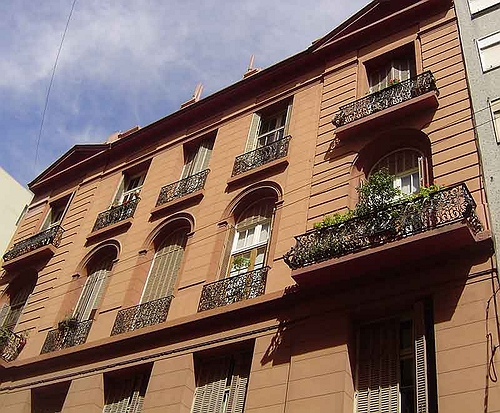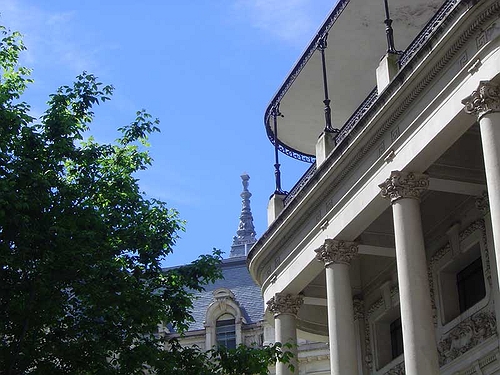The other day walking down calle Marcelo T. de Alvear I saw a plaque on a building that I’ve never noticed before. The sign said that Uruguayan artist Pedro Figari (1861 – 1938) once lived in the building. I immediately remembered having seen some of Figari’s paintings in Montevideo.
The main reason I’ve never noticed the plaque before is that across the street is a view of the rear of Palacio Paz, which always attracts my eye. The location is off of calle Maipu, just down from the corner where Borges lived.
If you’re in the area, take a few minutes to wander down that block of Marcelo T.
An interesting article about Figari tells us a little about the avant garde in 1920s Buenos Aires.
In the same year that he [Figari] arrived in Buenos Aires, Jorge Luis Borges was returning to his native country after an absence of six years, bringing with him the experience of the Spanish Ultraismo literary movement. Two years later, Fervor de Buenos Aires appeared. Oliveiro Girondo published Veinte poemas para ser leìdos en el tranvìa, a forerunner of the literary renewal proposed by the Martin fierrista movement. Figari initially refused to follow this trend, but rediscovered it later on. Also in 1921, the Prisma editions were released. This mural magazine was the first of a long list of publications: Inicial (1923-27), Martin Fierro (1924-27), Proa (1924-26), Valoraciones (1923-28).
All of these publications clearly manifested a desire to confront everything that was European, even if the origins of those avant-garde movements had been founded on European literary and fine arts movements. Spain and Ultraismo, Italy and Futurism, France and Surrealism as well as the Dada movement.
Take a moment to check out a Google image search on Figari to get an idea of his paintings.


November 27th, 2006 at 3:23 pm
[…] The Uruguayan artist Figari is known for his paintings of candombe scenes. While there are a greater number of accounts of candombes in Montevideo, the African Associations demonstrate the significant role of Afro-Argentines in early 19th century Buenos Aires. […]